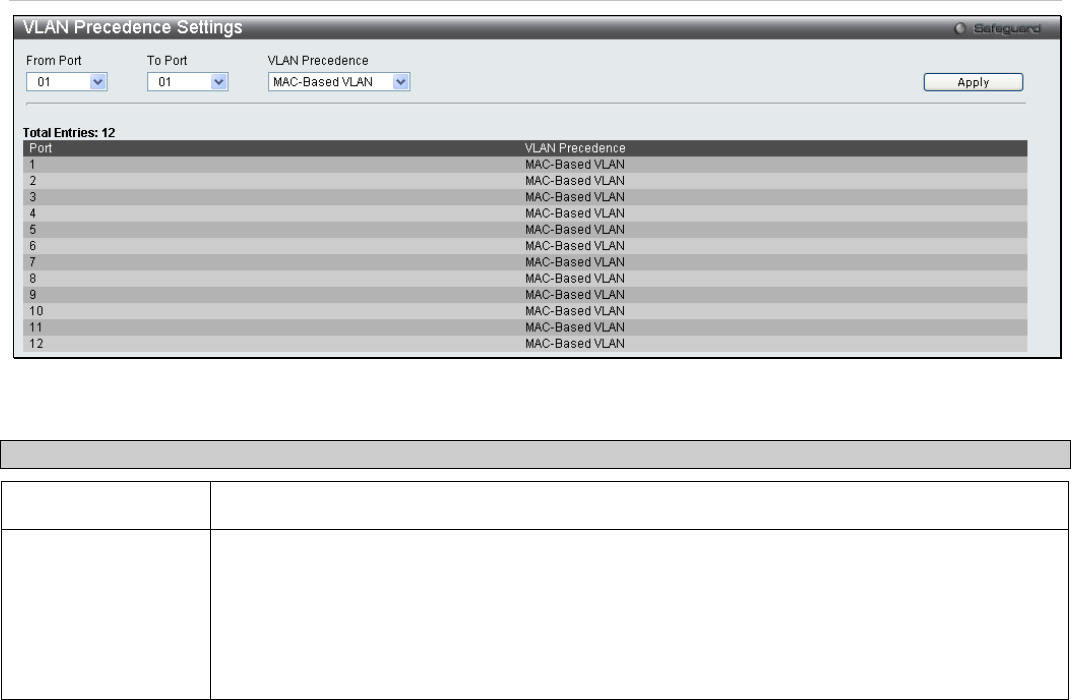
DGS-3700-12/DGS-3700-12G Series Layer 2 Gigabit Ethernet Switch User Manual
79
Figure 3 - 12 VLAN Precedence Settings window
The following parameters can be configured:
Parameter Description
From Port / To Port
Specify the port or range of ports you wish to configure.
VLAN Precedence
Use the drop down menu to select the VLAN precedence, choose either MAC Based VLAN or
Subnet VLAN.
MAC Based VLAN – Specifies that the MAC-based VLAN classification is given precedence
over the subnet VLAN classification.
Subnet VLAN – Specifies that the subnet VLAN classification is given precedence over the
MAC-based VLAN classification.
Click Apply to implement changes made.
Q-in-Q
Q-in-Q Settings
This function allows the user to enable or disable the Q-in-Q function. Q-in-Q is designed for service providers to carry
traffic from multiple users across a network. Q-in-Q is used to maintain customer specific VLAN and Layer 2 protocol
configurations even when the same VLAN ID is being used by different customers. This is achieved by inserting
SPVLAN tags into the customer’s frames when they enter the service provider’s network, and then removing the tags
when the frames leave the network.
Customers of a service provider may have different or specific requirements regarding their internal VLAN IDs and the
number of VLANs that can be supported. Therefore customers in the same service provider network may have VLAN
ranges that overlap, which might cause traffic to become mixed up. So assigning a unique range of VLAN IDs to each
customer might cause restrictions on some of their configurations requiring intense processing of VLAN mapping
tables which may exceed the VLAN mapping limit. Q-in-Q uses a single service provider VLAN (SPVLAN) for
customers who have multiple VLANs. Customer’s VLAN IDs are segregated within the service provider’s network
even when they use the same customer specific VLAN ID. Q-in-Q expands the VLAN space available while preserving
the customer’s original tagged packets and adding SPVLAN tags to each new frame.
To view this window, click L2 Features > QinQ > QinQ Settings as shown below:


















